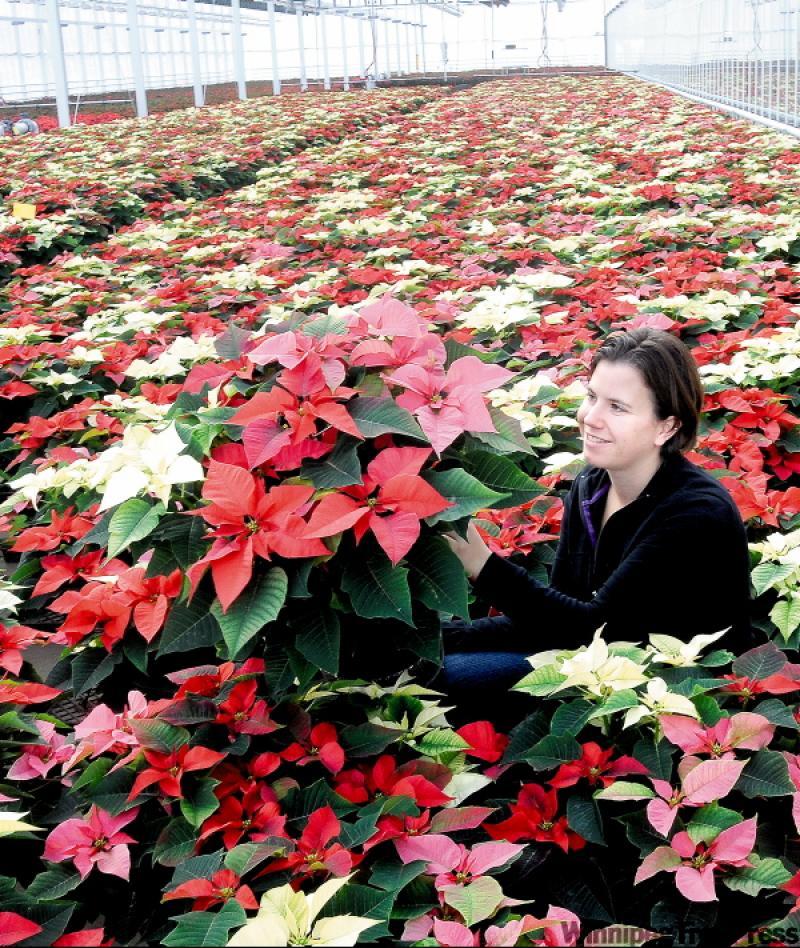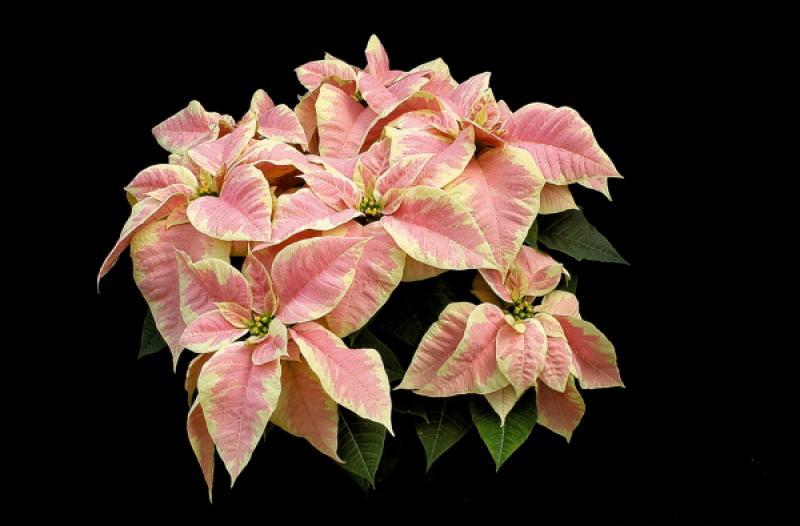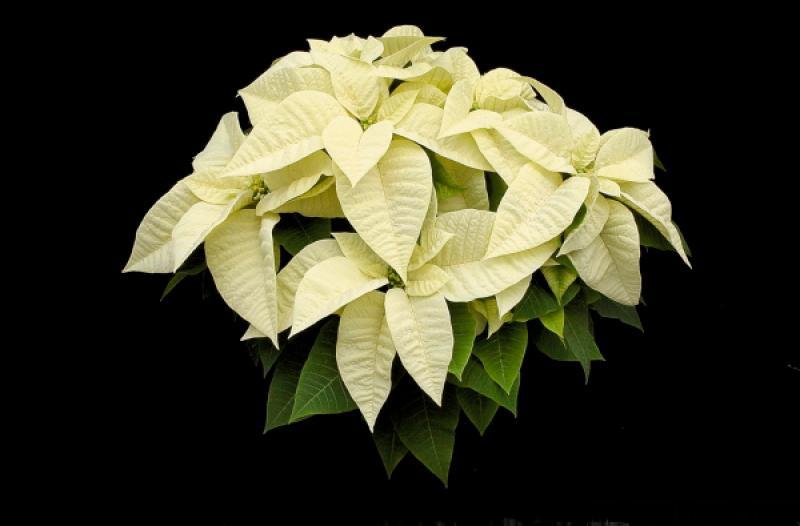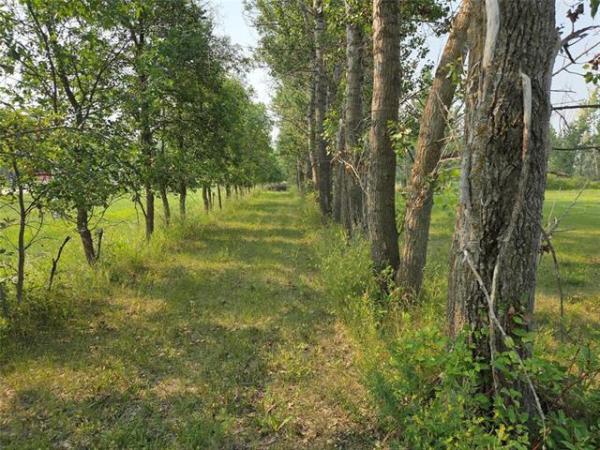


During the next few weeks, North Americans will spend more than $300 million buying about 75 million poinsettias to decorate homes and offices for Christmas.
The red-flowered poinsettia is native to Central America and was named after Joel Poinsettia, the first U.S. ambassador to Mexico. He fell in love with the plant in 1825 and introduced it to South Carolina.
A hundred years later, Paul Ecke, of Encinitas, Calif., realized the commercial potential in promoting the poinsettia as the ideal plant for Christmas.
Ecke Ranch quickly became the world's No. 1 breeder of poinsettias. The Ecke company did such as good job that when anyone sees a poinsettia today, they think Christmas.
Numerous attempts have been made over the years to shift consumers' interest to other colours and other plants in a bid to loosen the grip that the plain red poinsettia has on the festive season.
Nine years ago, Gordon Wong, of Meadowlands Horticultural in Burnaby, B.C., tried to start a new funky trend by marketing the world's first blue poinsettia called Blue Star.
In 2006, Fred C. Gloeckner Inc., a horticultural company based in New York, thought people would love psychedelic poinsettias in a range of "fantasy colours" including glittering apricot, lilac, orange, fuchsia, pink with purple blotches and yellow with orange blotches.
Neither concept took off.
Major poinsettia growers have also tried in vain to move consumers away from the standard all-red poinsettia. All sorts of designer poinsettia have been bred over the last decade -- soft pinks, creamy whites, speckled reds and twisty-curly ones. But, despite significant promotions, these cultivars have only managed to capture a tiny fraction of the market.
Eighty per cent of all the poinsettias sold every December are red; the remaining 20 per cent of sales are shared by novelty and designer poinsettias, most of which are used to add a more avant-garde look to restaurants, bars, clubs, shops and corporate offices. In homes, however, the classic, old-fashioned solid red is still the poinsettia of choice.
There are dozens of different reds, each with its cultivar name. Cortez Red, Freedom Red and Sonora Red are three of the most successful varieties. Bestselling whites are Cortez White, Freedom White and Whitestar.
The funkiest, punkiest poinsettia of them all -- one that was breed specifically to appeal to Gen-Xers in the 1990s -- is Winter Rose, which has weird, crinkled rose-like red leaves.
Jingle Bells is another novelty cultivar that garners much attention around the same time for its speckled leaves that are red with tiny snow-like flecks.
Interior designers have tended to favour the more subtle, supposedly more sophisticated tones of pale-green Limelight or wine-red Merlot or the Impressionistic soft pink of Monet.
Size of poinsettias is a bigger issue here in North America than it is in Europe.
Canadians like big, beefy plants. Europeans prefer smaller, more compact plants, mainly because they don't have room in their homes for a super-size poinsettias.
Tri-colour pots, featuring an attractive mix of red, pink and white poinsettias, are popular for decorating hotel, office and restaurant lobbies, but these are often produced as a special order for specific locations.
Pricing has always been a tricky business. Competition has been fierce in the poinsettia market with too many growers producing too many plants on occasions.
For instance, in 2004, there was a massive oversupply in B.C., partly because of a drop in the value of the U.S. dollar, which killed exports. This over-supply resulted in thousands of plants being dumped at the local flower auction, which in turn caused prices to plummet to rock-bottom.
Consumers were big winners that year and were able to pick up premium 15-centimetre plants for as little as $5.
Generally, a standard, 15 cm red poinsettia sells for about $15 -- more if it comes with special decorative packaging.
Tri-colour arrangements and super-size red and white planters are often priced at $24 or more, depending on packaging and extra decorative features.
Two common falsehoods about poinsettias are that the leaves are flowers and that the plants are poisonous.
What are usually referred to as flowers are leafy brachts that change colour as the daylight starts to diminish in the fall.
The plant's true flowers are scentless, yellow and inconspicuous. They can be found tucked among the leaves in the centre of the plant.
As for being poisonous, this was a scare that started in 1919 with a report that a two-year-old child died from eating poinsettia leaves.
Researchers have since shown that it would require a child weighing 50 pounds to consume at least 500 poinsettia leaves to reach a potentially toxic dose.
As with many plants, there's a degree of toxicity with poinsettia leaves, but people and pets are not likely to eat any of them, as the taste is said to be repulsive.
The only downside to the popularity of the poinsettia is that many people try to save them after Christmas in the hope that they will rebloom. Seeing colourless poinsettia plants in spring, however, is the horticultural equivalent of seeing a house with its Christmas lights still on in April.
-- Canwest News Service
Poinsettia Primer
Today, the world poinsettia market is controlled by three key producers: Ecke, Fischer and Selecta, which was recently acquired by Chicago-based Ball Horticultural.
Most of the growing and breeding of new cultivars takes place in Central America. Cuttings are shipped to commercial growers all over North America and these growers produce crops for their home markets.
The process starts in June, when growers receive their order of root cuttings.
It takes five weeks to get these ‘plugs’ properly rooted in six-inch pots. Next, the tops of the plants are pinched to promote bushiness. Growth retardant is used to keep some varieties from getting too tall and leggy.
In October, plants are given 13 hours of darkness each night to get them to set buds. This sometimes means growers have to use huge shade-curtains to block out excessive sunlight.
Breeders are concentrating on growing sturdier poinsettias that can stand up to the rigours of transportation and mishandling.
Efforts are also being made to breed environmentally friendly hybrids that can be cultivated without the use of growth retardant.



